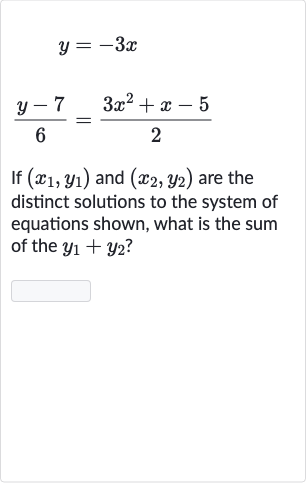AI tutor
Welcome to Bytelearn!
Let’s check out your problem:

If and are the distinct solutions to the system of equations shown, what is the sum of the ?
Full solution
Q. If and are the distinct solutions to the system of equations shown, what is the sum of the ?
- Write Equations: Write down the given system of equations.We have the following system:
- Substitute in Second Equation: Substitute the expression for from the first equation into the second equation.Since , we can replace in the second equation with :
- Eliminate Fraction: Multiply both sides of the equation by to eliminate the fraction on the left side.This simplifies to:
- Multiply Out: Multiply out the right side of the equation.
- Rearrange to Quadratic Equation: Rearrange the equation to set it to zero and form a quadratic equation.
- Factor or Use Quadratic Formula: Factor the quadratic equation, if possible, or use the quadratic formula to find the roots.The quadratic equation does not factor easily, so we will use the quadratic formula:Here, , , and .
- Calculate Discriminant: Calculate the discriminant to ensure that there are real solutions.Discriminant = = = = Since the discriminant is positive, there are two distinct real solutions.
- Calculate Roots: Calculate the roots using the quadratic formula.
- Find Corresponding y-values: Find the corresponding y-values using the first equation .
- Calculate Sum of y-values: Calculate the sum of .
More problems from Compare linear and exponential growth
QuestionGet tutor help
QuestionGet tutor help
QuestionGet tutor help
QuestionGet tutor help
QuestionGet tutor help
QuestionGet tutor help
QuestionGet tutor help
